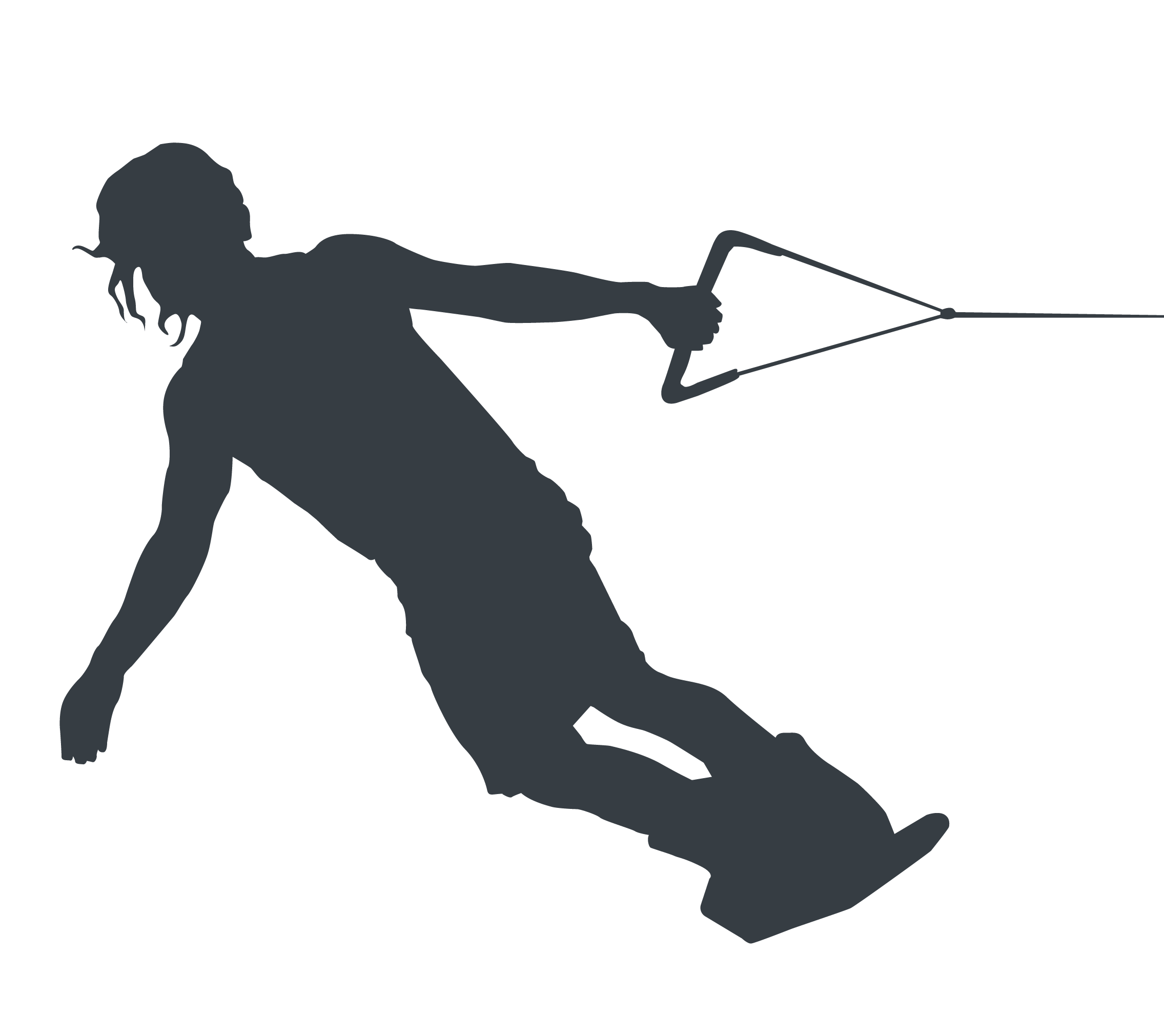Talk to your coach or organization, if applicable, about the prevention strategies below and how they might be incorporated into training and policies.
Strength Training and Neuromuscular Training Program
Ensure you warm up before engaging in wakeboarding; many wakeboarders move from sedentary positions as boat drivers or spotters to wakeboarding without exercising. Dry land conditioning is useful for strength conditioning; “wakeboarding into shape” can increase the risk of injury. Other benefits of dry land conditioning include correction of muscular imbalances, rehabilitation of injured muscles and joints, and minimizing strength loss in the off-season.
Specific Wakeboarding Strength and Conditioning Exercises
Strength and conditioning programs can address postural control, balance, and stability on the wakeboard. Consider learning more about how to incorporate these exercises into your workouts:
- Tandem squats and tandem deadlifts improve balance.
- Torso rotations, supine planks, prone planks, and side bridges tone the trunk muscles.
- Other recommended strength training exercises include wall slides, seated rows, and pull-ups.
Sport Injury Prevention Research Centre Neuromuscular Training
The risk of all lower body injuries may be reduced by up to 50% by regular participation in a balance training exercise program with a resistance training component, such as a neuromuscular training warm-up program.
The Sport Injury Prevention Research Centre has developed a neuromuscular training warm-up program that can be adapted to many sports. Incorporating a warm-up program like this one into your training program at least two times per week has been associated with a significant reduction in lower body injuries.
Click here to view poster.
Oslo Sport Trauma Research Centre Neuromuscular Training
Adopt strength training exercises designed to prevent injuries. The Oslo Sport Trauma Research Centre has developed exercises that specifically help keep the shoulder strong and reduce the risk of shoulder and ankle injuries. This resource includes videos and PDFs for download.
Learn more about exercises to help prevent shoulder injuries.
Learn more about exercises to help prevent ankle injuries.
For more exercises, visit http://fittoplay.org/.
Managing Concussion
Concussions are a common injury in wakeboarding. It is important to be aware of concussion signs and symptoms and know what to do if concussion is suspected. The Concussion Awareness Training Tool (CATT) is an online resource for participants and parents to learn more about how to recognize, prevent, and manage a concussion. CATT also includes resources on how to respond to a potential concussion situation, as well as detailed Return to School and Return to Sport protocol.
Equipment
Ensure that equipment is in good, working condition. Wakeboards should be appropriate for your body weight and height. Wear protective gear such as a wet or dry suit to decrease the risk of various skin abrasions, lacerations and/or contusions; as these are the most prevalent type of injuries sustained in wakeboarding. Additionally, wear a lifejacket and a helmet. Choosing a towrope with plastic and/or foam coating can also decrease the incidence of injury. Caution should be taken when picking bindings, as wakeboarding bindings are worn extremely tight, and some type of lubricant or soap may be required. The feet are securely attached to the board with an unforgiving release technique which may cause issues during a fall. Moreover, if these bindings are worn loosely, one foot could come out of the boot while the other stays in, creating a dangerous situation where the wakeboard is uncontrollable.
Education
If you are new to wakeboarding, take lessons at a reputable school. Be familiar with safety precautions and proper technique. Know how to assess both water and weather conditions before heading out on the water, and be aware of times for low and high tide if applicable.
AdventureSmart is a national program providing information to keep you safe while participating in outdoor recreational activities.
Learn more about water safety.
Sleep, Vigilance and Sport Injury Prevention
Being successful in physical activity requires a high degree of alertness, also known as vigilance. Sufficient sleep helps your body to recover, allows you to achieve your goals, and reduces your risk of injury. Getting less than 8 hours of sleep can increase your rate of injury by up to 70%! Watch this video to learn more about how sleep and vigilance are connected.
Sport-related Physicals
Wakeboarding can be a physically demanding sport and some pre-existing conditions may increase the risk of injury. An annual sport-related physical evaluation ensuring fitness to participate can help to reduce risk of injury. KidsHealth provides information about what sports physicals are, why they may be appropriate and where you may go to get them.
Learn more about Kids Health Sports Physicals.






